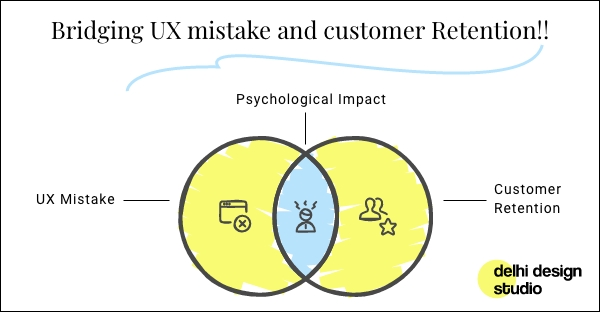
The Psychology Behind UX Mistakes That Cost You Sales!
Did you know 88% of users won’t return after a bad experience?😨 Many businesses unknowingly drive customers away due to poor UX. If your website or app isn't converting, these could be the reasons why:
Complicated Navigation
The Mistake : When users struggle to find what they need due to complicated navigation, they are likely to abandon the site.
The Psychology: Cognitive load theory suggests that when users are overwhelmed with choices or complex pathways, their ability to make decisions diminishes. Simplifying navigation reduces cognitive load, making it easier for users to find information quickly.
Slow Load Times
The Mistake: Websites that take too long to load can frustrate users and lead to high bounce rates.
The Psychology: According to the Zeigarnik effect, users are more likely to remember unfinished tasks. If a page takes too long to load, users may feel their time is wasted, leading to dissatisfaction and abandonment.
Poor Mobile Optimization
The Mistake: Ignoring mobile users by not optimizing for mobile devices can alienate a significant portion of your audience.
The Psychology: The principle of accessibility highlights that users expect a seamless experience across devices. If a site is difficult to navigate on mobile, users may perceive the brand as outdated or untrustworthy.
Lack of Clear Calls to Action (CTAs)
The Mistake: When CTAs are vague or hard to find, users may not know what steps to take next.
The Psychology: The Fogg Behavior Model indicates that motivation, ability, and prompts must align for users to take action. Clear and prominent CTAs enhance motivation and ability, guiding users toward desired actions.
Overwhelming Content
The Mistake: Presenting too much information at once can overwhelm users and lead to decision paralysis.
The Psychology: The Hick-Hyman Law states that the more choices users have, the longer it takes to make a decision. Streamlining content and breaking it into digestible sections can help users process information more effectively.
Ignoring User Feedback
The Mistake: Failing to incorporate user feedback into design updates can result in a disconnect between user needs and the product.
The Psychology: The principle of social proof suggests that users are influenced by the experiences of others. By actively seeking and implementing user feedback, brands can foster trust and loyalty.
Inconsistent Design Elements
The Mistake: Inconsistencies in design, such as varying button styles or color schemes, can confuse users and diminish brand credibility.
The Psychology : Cognitive consistency theory posits that users prefer harmony and coherence in their experiences. A consistent design reinforces brand identity and helps users navigate with confidence.
🚀 Want to stop losing customers? At Delhi Design Studio, we design experiences that keep users engaged, based on real customer psychology.
📩 DM us or comment to get a FREE UX AUDIT and see how we can improve your website’s performance